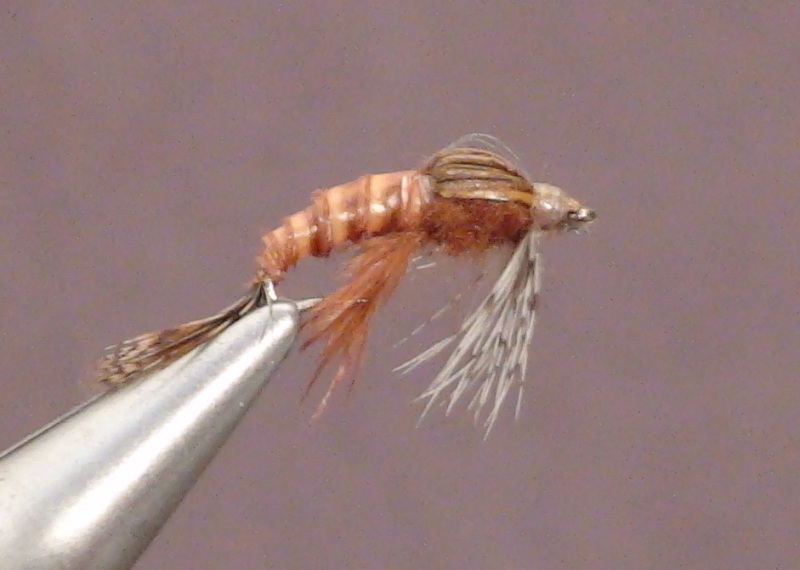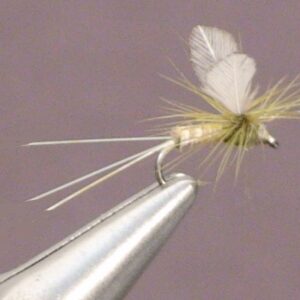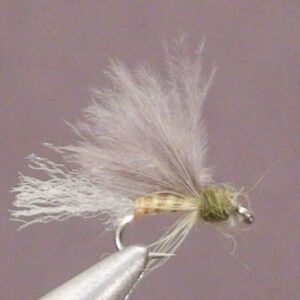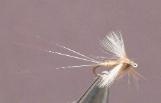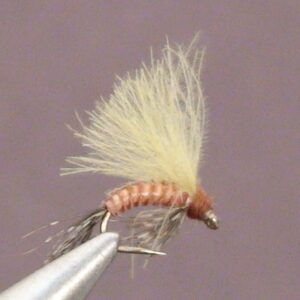Hook Size: 16/18
The Perfect Fly Pale Morning Dun nymph is a trout fly that imitates the mayfly in the nymphal stage of life. Pale Morning Dun nymphs are crawler nymphs. They crawl about on the bottom and should be fished on or near the bottom.
The Pale Morning Duns are found in the slow to moderate flowing waters of the streams
they inhabit. They are crawler nymphs that live for a year. They can swim although not
very well. Like many other nymphs, their exact coloration is somewhat a product of the
stream they live in and the color of the nymphs will vary depending upon the water.
I would think trout eat these nymphs on a regular basis since they are regularly
exposed to them or at least they don’t tend to stay underneath rocks like the clinger
nymphs do. They do stay down between the cobble and gravel on the bottom of the
stream. Where there is lots of vegetation they can probably avoid being eaten to some
extent by hiding in the plants. There is certainly no shortage of these nymphs, so there
are plenty of them that don’t get eaten by the trout.
Although the nymphs are found in slow to moderate moving water, don’t overlook the
fact that this can be in slower, calmer areas of streams that consist mainly of fast,
pocket water. You will find them in the slower sections of water in pockets along the
banks and in pockets behind large rocks and boulders. They are also found at the ends
of long runs and riffles and the slower moving water on the inside of the river bends. Most
streams have as many or more of these nymphs as any mayfly nymph that inhibits the
stream, so fishing an imitation of the PMD is always a good choice.
Presentation:
You can fish an imitation of the nymph on the bottom anytime during the season prior to
the end of the long hatch. That means from the time the season opens until the PMD
hatches have ended on that stream.
The hatches normally start mid-morning. During those days a hatch is occurring, you
can start out with a nymph imitation and continue to fish it up until the hatch starts. The
nymphs swim to the surface and hatch in the skim.
In pocket water, prior to a hatch, I would fish the nymph imitation in the current seams
and the through the long runs. Weight it down with and keep it on the bottom as much as
possible. Use a very short, up and across cast and follow the nymph downstream holding
the rod tip high. Continue until the nymph is down and across and then make another
cast a couple of feet upstream of the previous one. You will have to approach the areas
you are fishing carefully to avoid spooking the trout when you are making this short of a
cast.
In smooth water you will need to make a much longer, up and across presentation and
keep the nymph on the bottom by weighting the tippet a few inches above the fly and
continuously mending the line.
Smooth water in rivers can be deceptive. The current is usually very strong even though
the water is smooth. There is a lot of vegetation that your fly will hang on unless you
select the areas to drift your nymph through. It is also difficult to keep a drag free drift in
the swirling currents. I watch the end of my fly line to detect strikes but you may prefer to
use a small strike indicator. Fish the nymph until it is in the down and across position
before making another cast.
Copyright 2003 James Marsh
